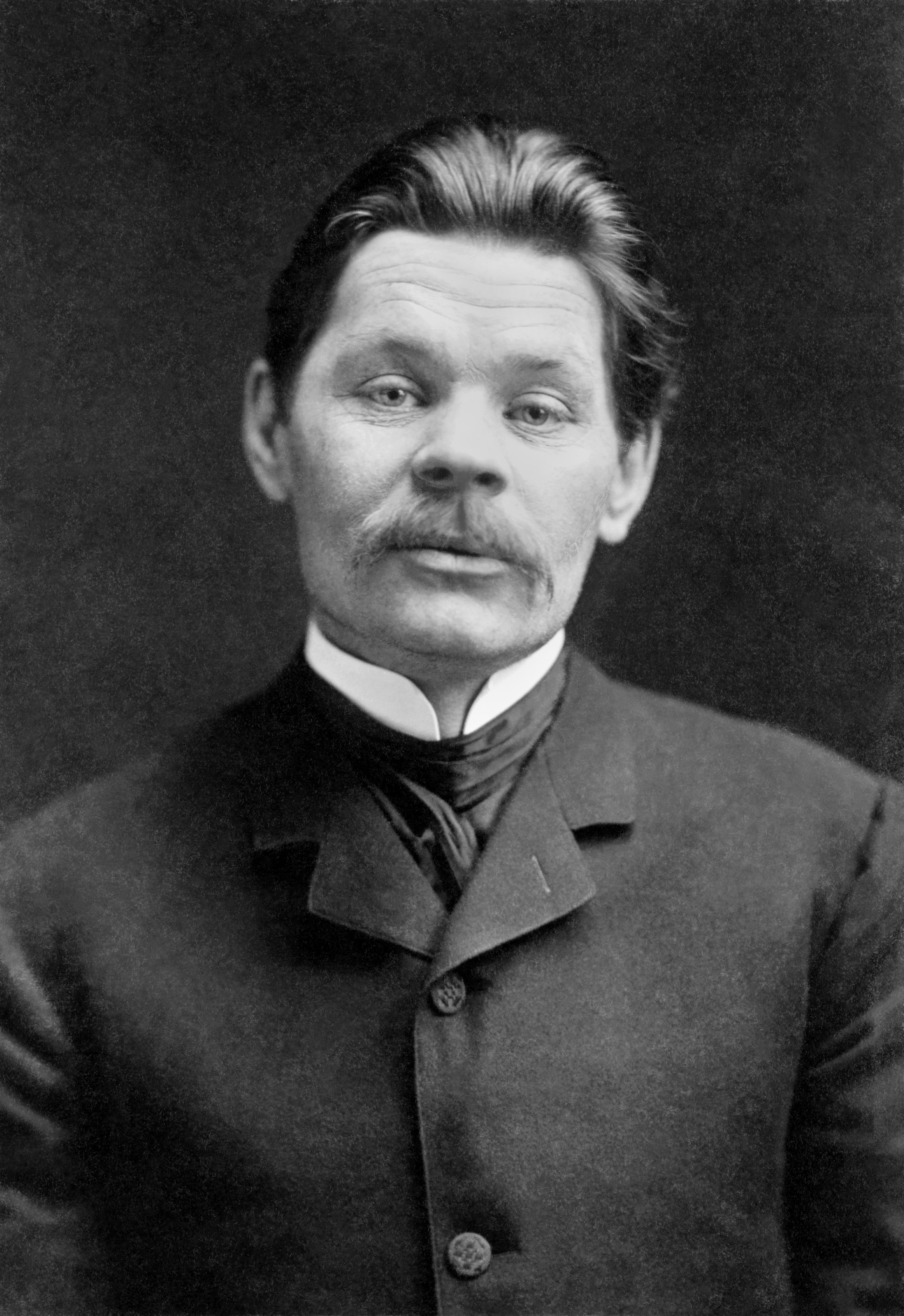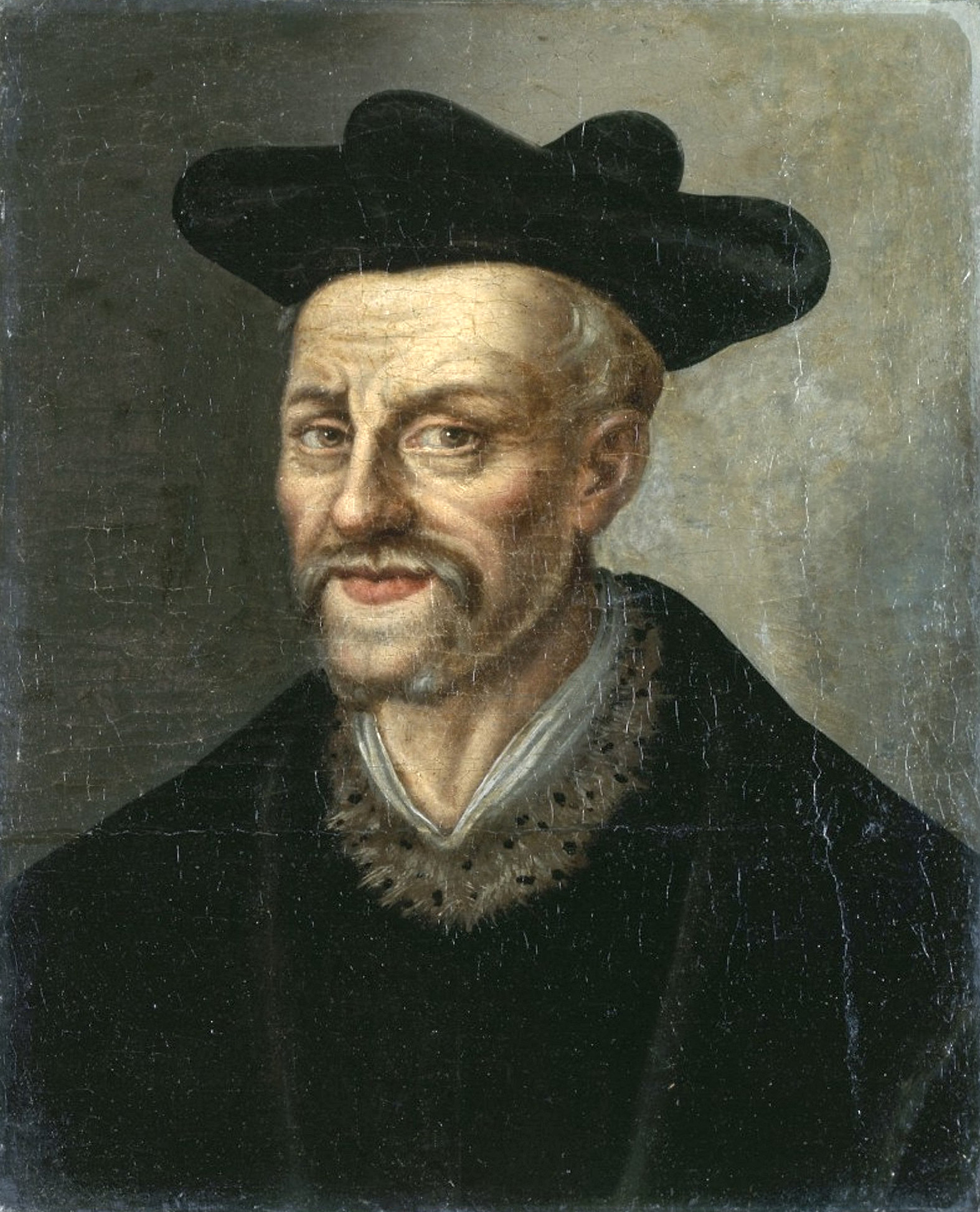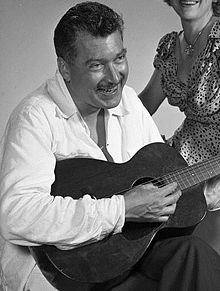Katherine Anne Porter (1890-1980) Flowering Judas (1930) Born: Indian Creek, Texas. Buried: Indian Creek Cemetery, Indian Creek, Texas. Katherine Anne Porter Literary Center, 508 Center Street, Kyle, Texas.
Jose Echegaray (1832-1916) Folly or Saintliness (1876), The Great Galeoto (1881) Born: Madrid, Spain. Buried: Cemeterio Sacramental de San Isidro, Madrid, Spain. College: Escuela de Caminos
Maxim Gorki (1868-1936) Foma Gordyeeff (1899) Born: Nizhny Novgorod, Nizhny Nov. obl,, Russia. Buried: Kremlin Wall, Moscow, Russia. Gorky Museum (Ryabushinsky Mansion), Mal. Nikitskaya St 62, Moscow, Russia. Maxim Gorky Museum House, Semashko St 19, Nizhni Novgorod, Russia. Monument to Sadriddin Aini and Maxim Gorky, Somoni Avenue, Dushanbe, Tajikistan.
Wouldn't you like to see this guy take on Jonathan Franzen in a bar fight?
Kathleen Winsor (1919-2003) Forever Amber (1944) Born: Olivia, Minnesota. Buried: Apparently unknown. College: California (Berkeley)
Artie Shaw (1910-2004) Born: 255 E 7th Street, New York, New York. Buried: Pierce Brothers Valley Oaks Memorial Park, Westlake Village, Los Angeles, California.
Lana Turner (1921-1995) Born: Wallace, Idaho. Buried: Cremated, ashes in private hands.
John Galsworthy (1867-1933) The Man of Property (1906), In Chancery (1920), To Let (1922), The White Monkey/The Silver Spoon/Swan Song (1928) Born: Parkfield, Kingston Hill, Kingston-upon-Thames, London, England. Buried: Ashes scattered over South Downs, nr Bury, Sussex, England. Memorial, Cloisters, New College, Oxford, Oxfordshire, England. Memorial, Highgate Cemetery West, Highgate, London, England. College: New (Oxford).
One of the whiter of the infamous Dead White Males
Franz Werfel (1890-1945) The Forty Days of Musa Dagh (1934), The Song of Bernadette (1941) Born: Havricek 11, Prague, Czech Republic. Buried: Zentralfriedhof, Vienna, Austria.
John Donne (1572-1631) Born: Bread Street, Cheapside, City, London, England (*****9-1-96*****) Buried: St Paul's Cathedral, City, London, England (*****6-21-01*****). John Donne Pub, Nikitsky Boulevard 12, Moscow, Russia. College: Hertford (Oxford).
Charles Morgan (1894-1958) The Fountain (1932) Born: Warreston, Rodway Road, Bromley, Kent, England. Buried: Gunnersbury Cemetery, Hounslow, London, England. College: Brasenose (Oxford)
Vicente Blasco Ibanez (1867-1928) The Four Horsemen of the Apocalypse (1916) Born: Corner of Editor Manuel Aguilar Street and Baron de Carcer Avenue, Valencia, Spain. Buried: Cementeri di Valencia, Valencia, Spain. Blasco Ibanez House/Museum, Paseo Maritimo, Valencia, Spain. Fontana Rosa, Avenue Blasco Ibanez, Menton, Provence-Alpes-Cote d'Azur, France. College: Valencia
Rudolph Valentino (1895-1926) Born: Rudolph Valentino Museum, Via V. Emmanuelle 17, Castellaneta, Apulia, Italy. Buried: Hollywood Forever Cemetery, Hollywood, Los Angeles, California.
St John the Divine (c.6-c.100) Born: Bethsaida, Israel. Buried: Basilica of St John, Ephesus, Turkey. Cathedral of St John the Divine, 1047 Amsterdam Avenue, New York, New York.
Anne Frank (1929-1945) Anne Frank: The Diary of a Young Girl (1952) Born: Anne Frank Educational Center, Hansaallee 150, Frankfurt, Hesse, Germany. Grave: Bergen-Belsen Concentration Camp, Lohheide, Lower Saxony, Germany. Anne Frank House, Prinsengracht 263-267, Amsterdam, Netherlands. Anne Frank Center USA, 44 Park Place, New York, New York.
Mary Godwin Shelley (1797-1851) Frankenstein (1818) Born: Oakshott Court, Werrington Street, Somers Town, London, England. Buried: St Peter's Church, Bournemouth, Hampshire, England. Frankenstein Castle, Darmstadt, Hesse, Germany.
Benjamin Franklin (1706-1790) Autobiography of Benjamin Franklin (1818) Born: 1 Milk Street, Boston, Suffolk, Massachusetts. Buried: Christ Church Burial Ground, Philadelphia, Pennsylvania. Benjamin Franklin Museum, Franklin Court, Philadelphia, Pennsylvania. Benjamin Franklin House, 36 Craven Street, Westminster, London, England. Franklin Institute, 222 N 20th Street, Philadelphia, Pennsylvania.
Gene Stratton-Porter (1863-1924) Freckles (1904) Born: near Lagro, Indiana. Buried: Gene Stratton-Porter State Historic Site, 1205 Pleasant Point, Rome City, Indiana. Limberlost State Historic Site, 200 East 6th Street, Geneva, Indiana.
Sigmund Freud (1856-1939) A General Introduction to Psychoanalysis (1910) Born: Sigmund Freud Museum, Zamecnicka 17, Pribor, Czech Republic. Buried: Golders Green Crematorium, Golders Green, London, England. Sigmund Freud Museum, Berggasse 19, Vienna, Austria. Freud Museum, 20 Maresfield Gardens, Hampstead, London, England. College: Vienna.
Robert Greene (1558-1592) Friar Bacon and Friar Bungay (1590) Born: Norwich, Norfolk, England. Buried: Unknown. College: St John's (Cambridge)
James Jones (1921-1977) From Here to Eternity (1951) Born: Robinson, Illinois. Buried: Poxabrogue-Evergreen Cemetery, Bridgehampton, Suffolk, New York.
Charles MacArthur (1895-1956) The Front Page (1928) Born: Scranton, Pennsylvania. Buried: Oak Hill Cemetery, Nyack, Rockland, New York.
Ben Hecht (1894-1964) The Front Page (1928) Born: Lower East Side, New York, New York. Buried: Oak Hill Cemetery, Nyack, Rockland, New York, New York.
William Stevenson (1530-1575) Gammer Gurton's Needle (c.1553-1566) Born: Hunwick, Durham, England. Buried: Unknown? College: Christ Church (Cambridge)
Robert Hichens (1864-1950) The Garden of Allah (1904) Born: Speldhurst, Kent, England. Buried: ??? College: Royal College of Music.
Francois Rabelais (1490-1553) Gargantua and Pantagruel (1532-62) Born: Musee Rabelais (La Deviniere), Seuilly, Touraine, France. Buried: St Paul des Champs, corner of Rues St Paul et Neuve St Pierre, 4eme, Paris, Ile, France. (ed--This church and its cemetery were unfortunately destroyed during the Revolution in 1796. However, it appears that some ruins of the old church remain on the spot. College: Montpellier
Thomas Urquhart (1611-1660) Born: Cromarty House, Cromarty, Highland, Scotland. Courthouse Museum, Church Street, Cromarty, Highland, Scotland. Buried: Windsor Castle (?), Windsor, Berkshire, England. Urquhart Castle, nr Drumnadrochit, Highland, Scotland. College: King's (Aberdeen)
Urquhart collects donations at the Cromarty Courthouse Museum.
Pierre Le Motteux (1663-1718) Born: Rouen, Normandy, France. Buried: Church of St Andrew Undershaft, City, London, England.
Jacques Leclercq (1898-1972) Born: Austria. Buried: Long Island National Cemetery, East Farmingdale, Suffolk, New York.
There are many references on the internet to Leclercq's brilliance, sophistication and bon-vivant nature. His daughter was a noted ballet dancer and Leclercq himself was well-known as a man about town in cultured New York circles during the middle years of the 20th century. Basic biographical information about him on the internet is scant however. (His well-regarded translation of Rabelais for the Modern Library was published in 1930, hence his appearance in our notes here). I also cannot find any pictures that are definitely confirmed to be him.
Ivan Bunin (1870-1953) The Gentleman From San Francisco (1916) Born: Voronezh, Voronezh obl, Russia. Buried: Sainte-Genevieve-des-Bois Russian Cemetery, Sainte-Genevieve-des-Bois, Essonne, Ile, France. Ivan Bunin Museum, ul Maksima Gorkogo 16, Yelets, Lipetz obl, Russia. Ivan Bunin Museum, Georgievsky per 1, Oryol, Oryol Obl, Russia. Bunin House-Museum, Turgeneva St 47, Efremov, Tula obl, Russia. Vorontsov Palace, Alupka, Ukraine.
Anita Loos (1889-1981) Gentlemen Prefer Blondes (1925) Born: Mount Shasta, Siskiyou, California. Buried: Etna Cemetery, Etna, Siskiyou, California. Chantilly lace cocktail dress, Museum of the City of New York, 1220 5th Avenue, New York, New York.







